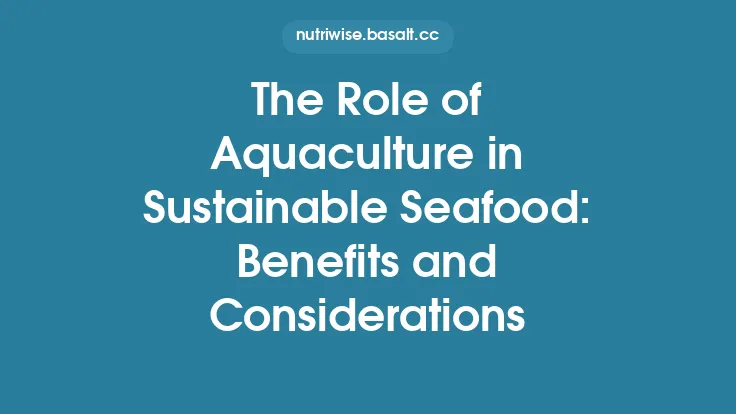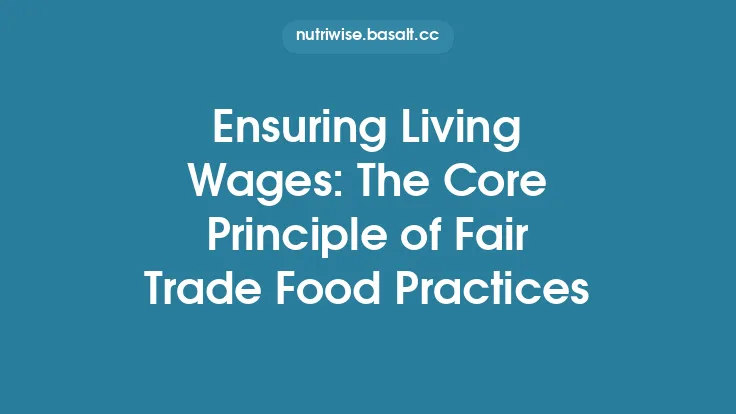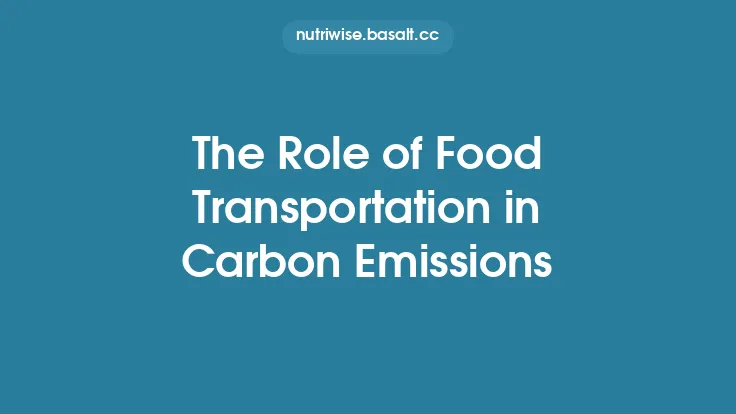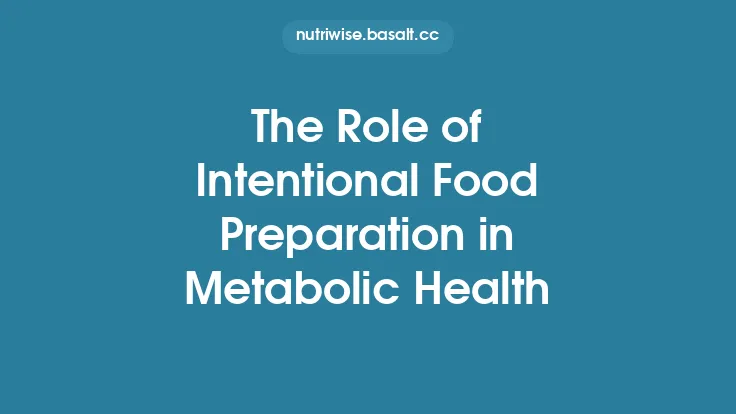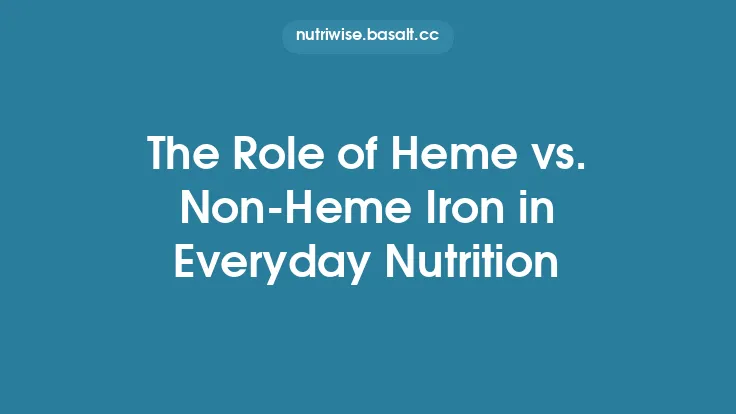Worker cooperatives have emerged as a powerful model for producing food that is both environmentally sustainable and socially equitable. By placing ownership and decision‑making in the hands of the workers who grow, process, and distribute food, these enterprises create a feedback loop that aligns economic incentives with ecological stewardship and fair labor practices. This alignment can lead to more resilient local food systems, reduced environmental footprints, and a stronger voice for agricultural workers in shaping the future of food production.
Understanding Worker Cooperatives
A worker cooperative is a business owned and democratically controlled by its employees. Unlike traditional corporations, where ownership is typically concentrated among shareholders, a cooperative distributes equity equally among its members. Each worker‑owner holds one vote, regardless of the amount of capital they have contributed, ensuring that strategic decisions reflect the collective interests of the workforce.
In the context of food production, worker cooperatives can span the entire value chain—from small‑scale farms and processing facilities to distribution hubs and retail outlets. The cooperative structure encourages members to consider the long‑term health of the land, the well‑being of their colleagues, and the needs of the communities they serve, rather than focusing solely on short‑term profit maximization.
Key characteristics of worker cooperatives include:
- Member‑Owned Capital: Initial capital is contributed by the members, often supplemented by community‑based financing or cooperative‑specific loan programs.
- Democratic Governance: Decisions are made through a one‑member‑one‑vote system, typically in regular general meetings or via elected boards.
- Profit Sharing: Surpluses are allocated to members based on a pre‑agreed formula, which may consider hours worked, seniority, or other equitable metrics.
- Autonomy and Independence: While cooperatives can partner with external entities, they retain control over core operational decisions.
These principles lay the groundwork for integrating sustainable agricultural practices with fair labor standards.
Governance and Democratic Decision‑Making
The democratic nature of worker cooperatives directly influences how sustainability goals are set and pursued. Because every member has a voice, discussions about soil health, water usage, pesticide reduction, and energy efficiency become part of the regular decision‑making process rather than being relegated to a distant board of directors.
Participatory Planning
Cooperatives often adopt participatory planning cycles, such as:
- Vision Workshops – Members collectively define long‑term sustainability objectives (e.g., achieving carbon‑neutral production within ten years).
- Strategic Goal‑Setting – Specific, measurable targets are established (e.g., reducing synthetic fertilizer use by 30%).
- Implementation Committees – Small working groups, composed of members with relevant expertise, design and execute action plans.
- Monitoring & Review – Regular audits and transparent reporting allow the entire membership to assess progress and adjust tactics.
Because the governance structure encourages transparency and accountability, members are more likely to adopt practices that protect the environment and promote workplace well‑being.
Conflict Resolution
Democratic cooperatives also embed conflict‑resolution mechanisms that address labor concerns promptly. Peer‑mediated panels, grievance committees, and clear procedural guidelines help maintain a healthy workplace culture, reducing turnover and fostering a sense of shared purpose.
Economic Resilience and Local Food Systems
Worker cooperatives contribute to the economic stability of local food systems in several ways:
- Retention of Value Locally – Profits generated by the cooperative stay within the community, either as member earnings or reinvested capital for expansion, infrastructure upgrades, or community projects.
- Diversified Revenue Streams – Many cooperatives adopt a mixed‑model approach, combining direct‑to‑consumer sales (farmers’ markets, CSA boxes) with wholesale contracts to restaurants, schools, and institutions. This diversification buffers the enterprise against market volatility.
- Collective Risk Management – By pooling resources, cooperatives can invest in shared equipment (e.g., solar panels, water‑saving irrigation systems) that would be unaffordable for individual farmers, reducing operational costs and environmental impact.
- Strengthened Local Networks – Cooperative members often collaborate with neighboring farms, food hubs, and community organizations, creating a web of mutual support that enhances food security and reduces dependence on distant supply chains.
These economic benefits reinforce the cooperative’s capacity to invest in sustainable practices without compromising financial viability.
Environmental Stewardship in Cooperative Models
The alignment of ownership and labor incentives in worker cooperatives creates a natural platform for implementing environmentally responsible agriculture. Several mechanisms illustrate this synergy:
Regenerative Agriculture Practices
Cooperative members, who directly reap the benefits of healthy soils, are motivated to adopt regenerative techniques such as:
- Cover Cropping & Crop Rotation – Improves soil organic matter, reduces erosion, and breaks pest cycles.
- Managed Grazing – Optimizes pasture health, sequesters carbon, and enhances biodiversity.
- Composting & On‑Farm Nutrient Recycling – Reduces reliance on synthetic fertilizers and lowers waste.
Because decisions are made collectively, the cooperative can allocate time and resources for longer‑term soil health initiatives that might be overlooked in a conventional profit‑driven operation.
Energy Efficiency and Renewable Integration
Cooperatives often invest in renewable energy projects that benefit all members:
- Solar Photovoltaic Installations – Provide clean electricity for processing facilities, reducing greenhouse‑gas emissions and operating costs.
- Biogas Digesters – Convert agricultural waste into usable energy, closing nutrient loops and decreasing landfill contributions.
Member ownership ensures that the upfront capital is viewed as a shared investment rather than a cost imposed by an external shareholder.
Water Conservation
Democratic governance facilitates the adoption of water‑saving technologies:
- Drip Irrigation Systems – Deliver water directly to plant roots, minimizing waste.
- Rainwater Harvesting – Captures and stores precipitation for irrigation during dry periods.
Cooperatives can collectively negotiate bulk purchases of efficient irrigation equipment, making these technologies more affordable for individual members.
Integrating Fair Labor Practices
While the article’s primary focus is on sustainability, the cooperative model inherently supports fair labor practices that complement environmental goals:
- Equitable Compensation Structures – Profit distribution formulas can be designed to reward both labor input and adherence to sustainability metrics, encouraging members to work toward shared ecological targets.
- Safe Working Conditions – As owners, workers have a direct stake in maintaining safe equipment, proper training, and health protocols, reducing the likelihood of accidents and occupational hazards.
- Skill Development and Education – Cooperatives frequently allocate resources for continuous learning, offering workshops on organic farming, agroecology, and business management. This investment enhances worker expertise and career pathways.
- Work‑Life Balance – Democratic scheduling and transparent workload distribution help prevent over‑exertion, fostering a healthier, more productive workforce.
By embedding these practices into the cooperative’s bylaws and daily operations, worker‑owned food enterprises can achieve a holistic model of sustainability that respects both the planet and the people who tend it.
Financing and Scaling Cooperative Food Enterprises
Access to capital has historically been a barrier for small producers, but worker cooperatives have developed innovative financing mechanisms that align with their values:
- Member Equity Contributions – Initial capital is raised from the workers themselves, ensuring that ownership remains broadly distributed.
- Community‑Based Loans – Credit unions, cooperative banks, and impact‑investment funds often provide low‑interest loans tailored to cooperative structures.
- Crowdfunding and Community Shares – Local residents can purchase non‑voting shares, providing additional capital while strengthening community ties.
- Grant Programs – Governmental and philanthropic programs focused on sustainable agriculture and cooperative development can supply seed funding for pilot projects.
When scaling, cooperatives can replicate successful models through networked cooperativism—forming federations of cooperatives that share best practices, bulk‑purchase inputs, and coordinate marketing efforts. This network approach preserves the democratic ethos while achieving economies of scale comparable to larger agribusinesses.
Policy Support and Legal Frameworks
The growth of worker cooperatives in sustainable food production is bolstered by supportive policy environments:
- Cooperative Legislation – Jurisdictions that recognize cooperatives as a distinct legal entity simplify incorporation, taxation, and governance.
- Agricultural Incentives – Subsidies for organic certification, renewable energy installations, and conservation practices can be directed toward cooperatives, encouraging environmentally friendly investments.
- Labor Standards – Policies that protect collective bargaining rights and ensure safe working conditions reinforce the cooperative’s internal labor standards.
- Research and Extension Services – Public institutions that provide technical assistance on regenerative agriculture and cooperative management help bridge knowledge gaps.
Advocacy by cooperative networks can influence policy development, ensuring that regulations remain conducive to both sustainability and democratic ownership.
Challenges and Opportunities for the Future
Despite their many advantages, worker cooperatives face a set of challenges that require strategic attention:
- Capital Intensity – Transitioning to regenerative practices or renewable energy often demands significant upfront investment.
- Skill Gaps – Members may need training in both sustainable agriculture and cooperative governance, necessitating ongoing education programs.
- Market Access – Competing with large, conventional producers for shelf space and contracts can be difficult without robust marketing resources.
- Regulatory Complexity – Navigating differing legal definitions of cooperatives across regions can impede expansion.
Opportunities to address these hurdles include:
- Strategic Partnerships – Aligning with research institutions, NGOs, and ethical retailers can provide technical expertise and market channels.
- Digital Platforms – Leveraging e‑commerce and blockchain‑based traceability tools can enhance transparency and consumer trust without compromising cooperative values.
- Policy Advocacy – Collective lobbying for cooperative‑friendly financing and tax incentives can lower barriers to entry and growth.
- Education Hubs – Establishing cooperative learning centers can disseminate best practices, fostering a new generation of worker‑owner farmers.
By proactively navigating these dynamics, worker cooperatives can solidify their role as a cornerstone of sustainable, equitable food systems.
In sum, worker cooperatives offer a uniquely integrated approach to sustainable food production. Their democratic ownership structure aligns economic incentives with ecological stewardship and fair labor practices, creating resilient local food networks that benefit both people and the planet. As the global community seeks pathways toward more ethical and environmentally sound agriculture, the cooperative model stands out as a proven, adaptable, and evergreen solution.
